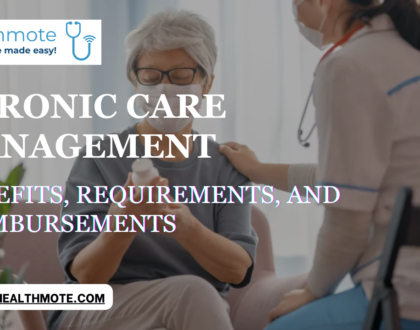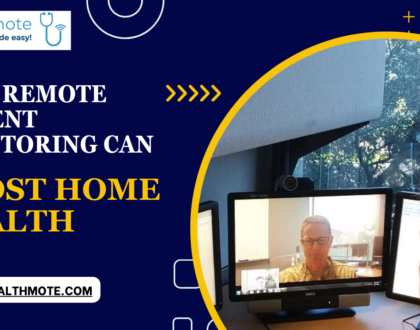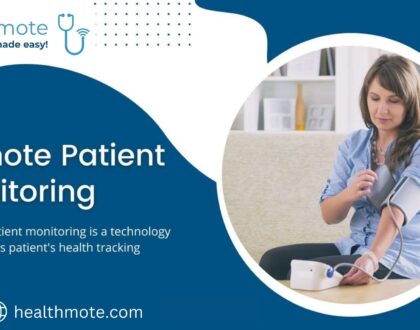
Remote Patient Monitoring: How It Benefits Patients
Welcome to HealthMote’s blog, where we delve into healthcare innovation. Today, we’re focusing on Remote Patient Monitoring and how it positively impacts patients. Let’s explore the benefits of this cutting-edge healthcare technology:
What Is Remote Patient Monitoring (RPM)?
- RPM is a healthcare service that allows patients to receive continuous monitoring and care from the comfort of their homes.
- Key Components:
· Wearable Devices: Patients use devices like smartwatches or medical sensors.
· Data Transmission: Collected data is securely sent to healthcare providers.
· Data Analysis: Healthcare professionals continuously monitor and analyze the patient’s health data.
· Feedback and Intervention: Patients receive real-time feedback and necessary interventions.
Benefits of Remote Patient Monitoring for Patients
1. Convenience and Comfort:
· Patients can manage their health without frequent hospital visits.
· Home comfort can reduce anxiety and stress often associated with healthcare facilities.
2. Real-Time Data Monitoring:
· Vital signs like heart rate, blood pressure, and oxygen levels are continuously tracked.
· Immediate detection of any irregularities or changes in health parameters.
3. Early Detection of Health Issues:
· RPM facilitates early intervention, preventing health complications.
· Timely adjustments in treatment plans based on real-time data.
4. Individualized Care:
· Tailored care plans designed to meet each patient’s unique needs.
· Personalized feedback and recommendations for better health.
5. Reduced Healthcare Costs:
· Fewer hospital visits translate to lower medical expenses.
· Potential cost savings on transportation and associated costs.
6. Chronic Condition Management:
· It is ideal for managing chronic conditions such as diabetes, hypertension, and COPD.
7. Enhanced Quality of Life:
· Patients can lead a more normal life while still receiving proper care.
· Greater independence and improved overall well-being.
8. Peace of Mind:
· Patients and their families have reassurance in the event of health emergencies.
· Continuous monitoring provides a sense of security.
How RPM Works for Patients
Device Usage:
· Patients wear or use monitoring devices that collect health data.
· These devices are user-friendly and non-intrusive.
Data Transmission:
· Collected data is transmitted securely through the internet to healthcare providers.
Data Analysis:
· Healthcare professionals interpret the data in real-time.
· Any anomalies trigger immediate attention.
Patient Engagement:
· Patients can access their data and engage actively in their health management.
· They receive feedback, reminders, and education through various channels.
RPM and Chronic Disease Management
· Diabetes Management:
· Continuous glucose monitoring for diabetes patients.
· Real-time insights help in managing insulin and diet.
· Hypertension Control:
· Regular monitoring of blood pressure.
· Medication adjustments as needed to maintain healthy blood pressure levels.
· COPD Support:
· Monitoring oxygen levels and lung function.
· Early detection of exacerbations reduces the risk of hospitalization.
· Cardiovascular Health:
o Monitoring heart rate and ECG data.
o Immediate intervention in case of irregularities.
Join HealthMote for the Future of Healthcare
At HealthMote, we are dedicated to improving patients’ lives through innovative healthcare solutions. Our RPM service empowers patients with the tools and support to manage their health effectively.
- Personalized Care: We design care plans tailored to your unique needs.
- Expert Guidance: Our team of healthcare professionals is committed to your well-being.
- Cost-Efficient: RPM can significantly reduce healthcare costs.
- Peace of Mind: Continuous monitoring ensures you’re always in safe hands.
Related Posts
November 13, 2023
Chronic Care Management Benefits, Requirements, and Reimbursements
October 17, 2023
How Remote Patient Monitoring Can Boost Home Health
September 14, 2023

 Linkedin
Linkedin

